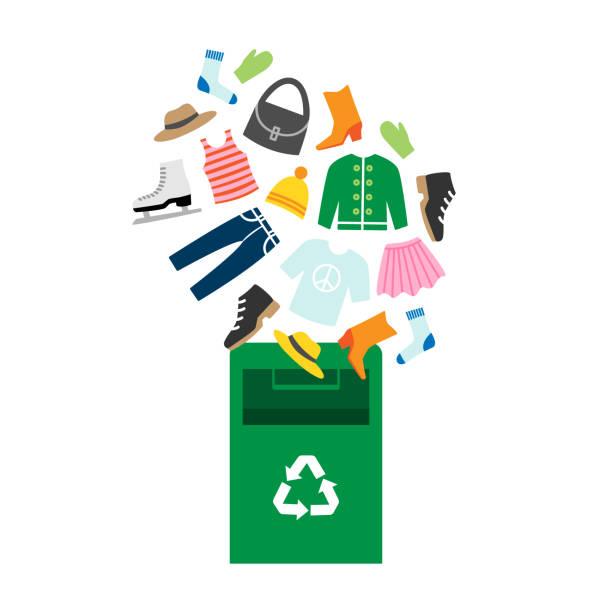Smart Textile Recycling: The New Norm
In a world increasingly defined by climate urgency, shifting consumer values, and overflowing landfills, textile recycling has become more than a sustainability buzzword—it's a necessity. From post-consumer clothing to pre-consumer scraps, recycling textiles is a game-changing solution that can reduce fashion waste, support green jobs, and power a truly circular economy.
This shift isn't coming—it's already here. The question is: are you part of it?
The Current Reality of Fabric Waste
Globally, we discard over 92 million tons of textile waste each year. That's the equivalent of a garbage truck full of clothes dumped every second. Most of these items are landfilled or burned, releasing CO₂ and toxic chemicals into the atmosphere.
What makes it worse? Nearly 95% of textiles could be recycled or reused—yet most end up as waste due to lack of awareness, infrastructure, or policy.
Enter textile recycling—a simple, scalable, and sustainable solution.
What Is Textile Recycling (and Why It Works)
Textile recycling is the process of converting old or unwanted clothing, fabric, or fiber-based products into new, usable materials. It prevents waste, extends the life of textiles, and reduces the demand for virgin resources.
The process generally includes:
-
Collection & Sorting: Used textiles are gathered, separated by material type (cotton, polyester, wool), and graded based on condition.
-
Reuse: Wearable items are cleaned and redistributed via thrift stores or donation channels.
-
Mechanical Recycling: Fabrics are shredded and reprocessed into insulation, carpet padding, stuffing, or even regenerated fibers.
-
Chemical Recycling: Advanced methods break down blended fibers into raw polymers for reuse in new textiles—without quality loss.
Each step keeps valuable materials in circulation and reduces the environmental burden of creating new products from scratch.
Why Textile Recycling Is the Future
♻️ Saves Raw Materials
Virgin fabric production consumes massive water, land, and energy. Recycling avoids this demand.
🌿 Reduces Emissions
Less production = fewer greenhouse gases. Textile recycling can reduce CO₂ output by up to 70% compared to producing new textiles.
🧺 Supports Circular Fashion
Recycling is essential to closing the loop—where fashion items are produced, worn, collected, and reborn into something new.
💼 Drives Innovation
Brands and recyclers alike are investing in smarter technologies—AI sorting, blockchain traceability, and chemical fiber separation.
Who Benefits from Textile Recycling?
✅ Consumers
More access to affordable clothing, thrift options, and conscious brands.
✅ Businesses
Reputation, cost savings, and alignment with ESG (Environmental, Social, and Governance) goals.
✅ Local Economies
Textile recycling creates jobs in logistics, sorting, processing, and upcycling.
✅ The Environment
Every ton of recycled textiles saves approximately 20,000 liters of water and prevents the emission of over 3 tons of CO₂.
Barriers—and How to Break Them
Despite its benefits, textile recycling still faces common roadblocks:
-
Lack of awareness among consumers
-
Inconsistent collection systems
-
Difficulty recycling blended or contaminated materials
-
Limited brand responsibility
To solve these challenges, we need a multi-pronged approach:
-
Public education on what can and can’t be recycled
-
Corporate take-back programs
-
Investment in textile recovery technologies
-
Partnerships between recyclers, municipalities, and retailers
That’s where service providers like Green City Recycle step in—to bridge the gap and make textile recycling accessible, reliable, and impactful.
How You Can Make a Difference
Whether you're a conscious consumer or a business leader, here are ways you can contribute to the textile recycling movement:
-
✅ Recycle instead of tossing: Never throw clothing in the trash. Donate or drop it off at recycling points.
-
✅ Buy recycled or upcycled products from brands that use circular materials.
-
✅ Wash less, repair more: Extending the life of garments is the most sustainable choice.
-
✅ Organize a community drive with your school, workplace, or neighborhood.
-
✅ Work with a trusted recycler to manage your textile waste responsibly.
Conclusion
The fashion industry is undergoing a major transformation. What was once a linear model—produce, purchase, pitch—is being replaced by something smarter and more sustainable: recycle, reuse, repeat.
At Green City Recycle, we believe in a future where textile waste is not a problem, but a resource. Our mission is to make recycling textiles simple, efficient, and scalable for businesses and individuals alike.
Join Green City Recycle today and help shape a future where sustainability isn’t optional—it’s the standard.
Because when we recycle fabric, we don’t just recover material—we reclaim our responsibility to the planet.



